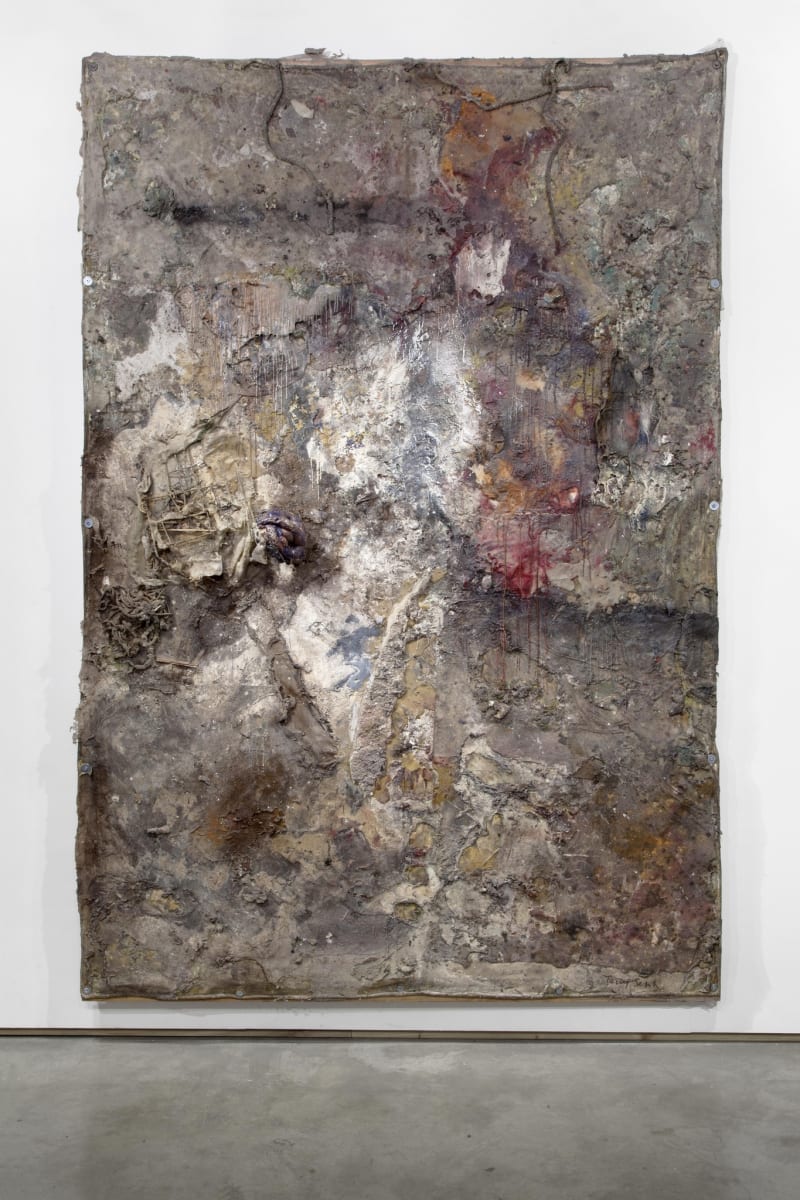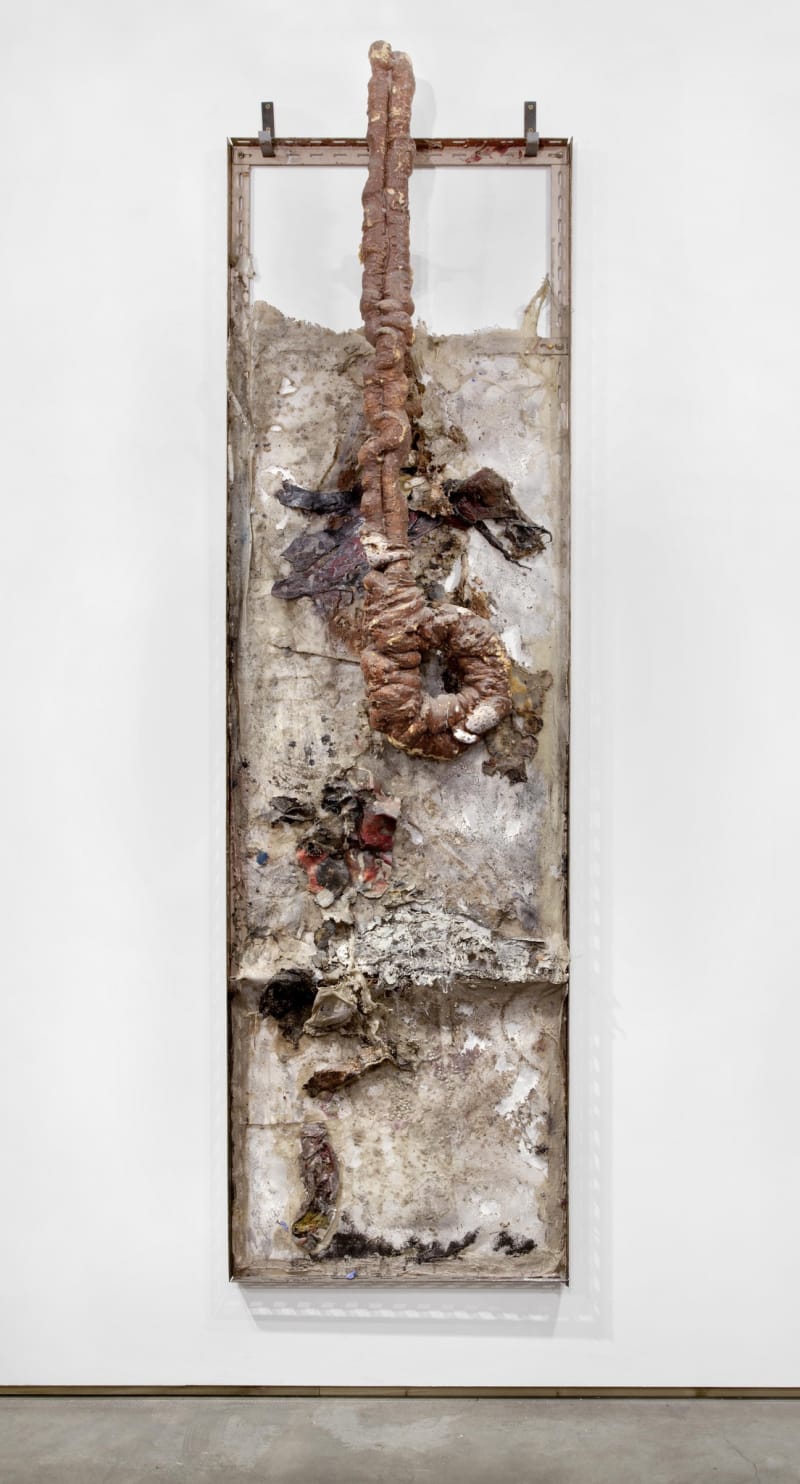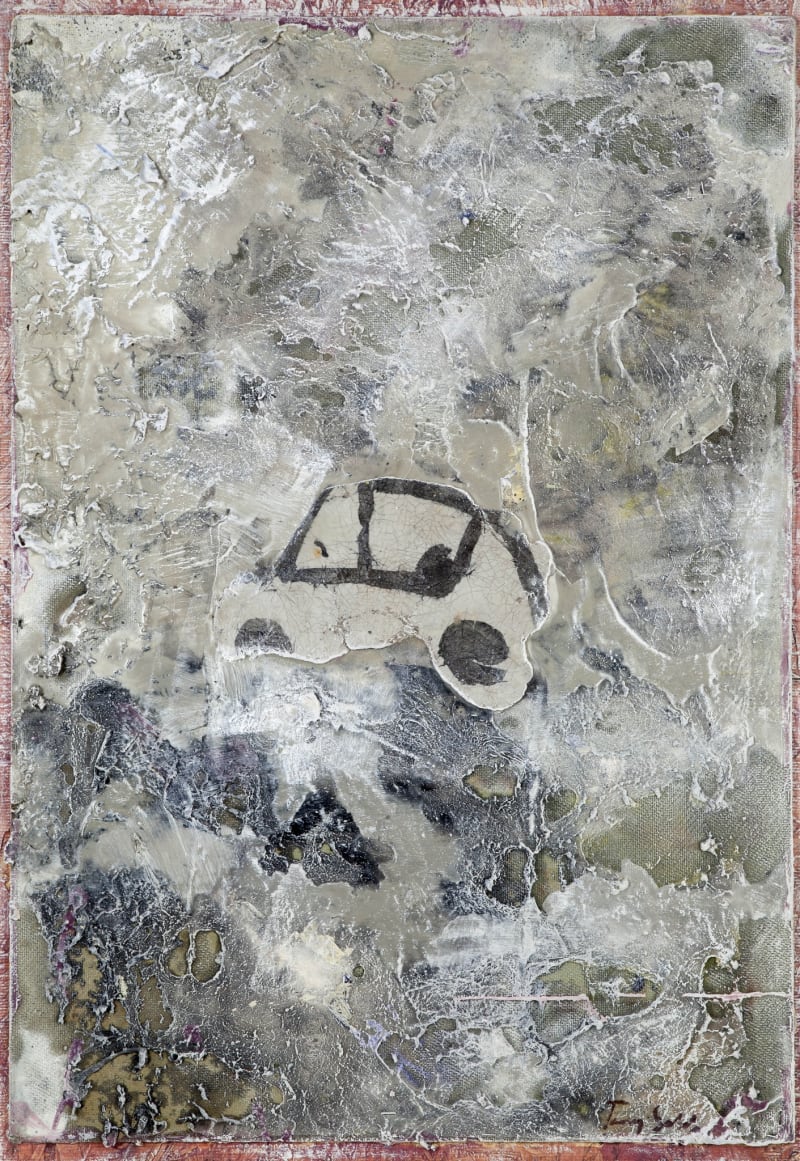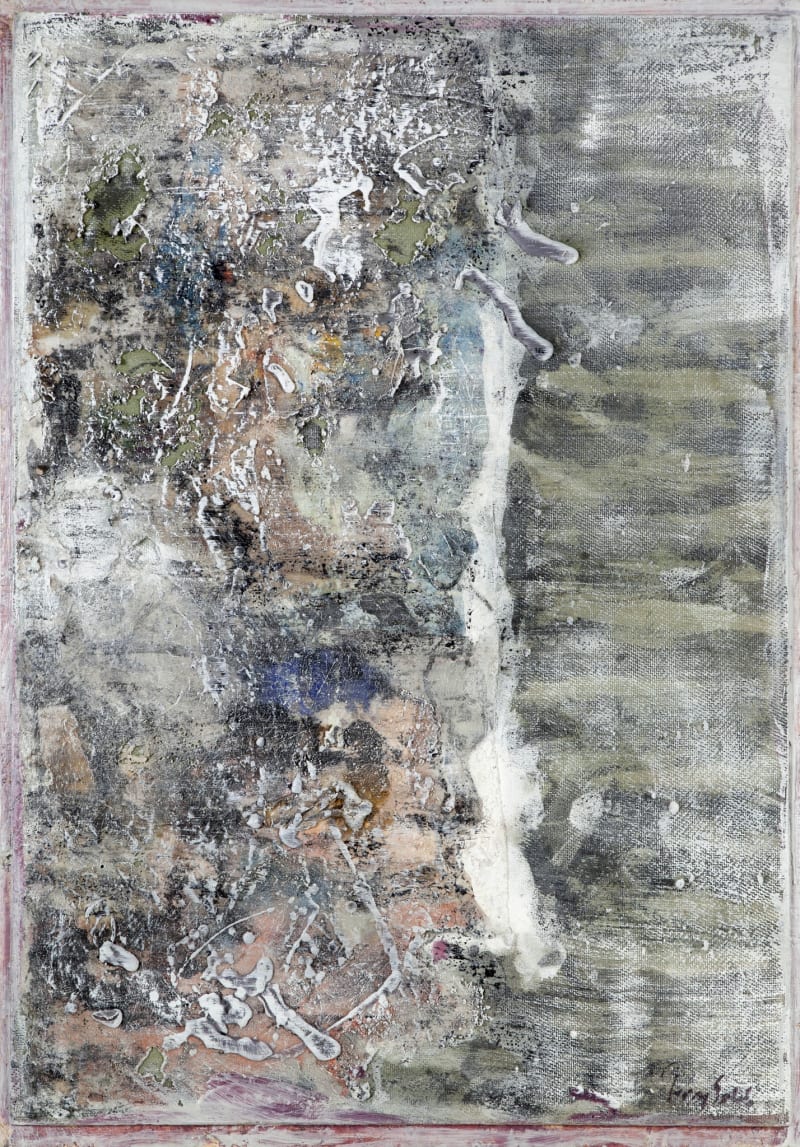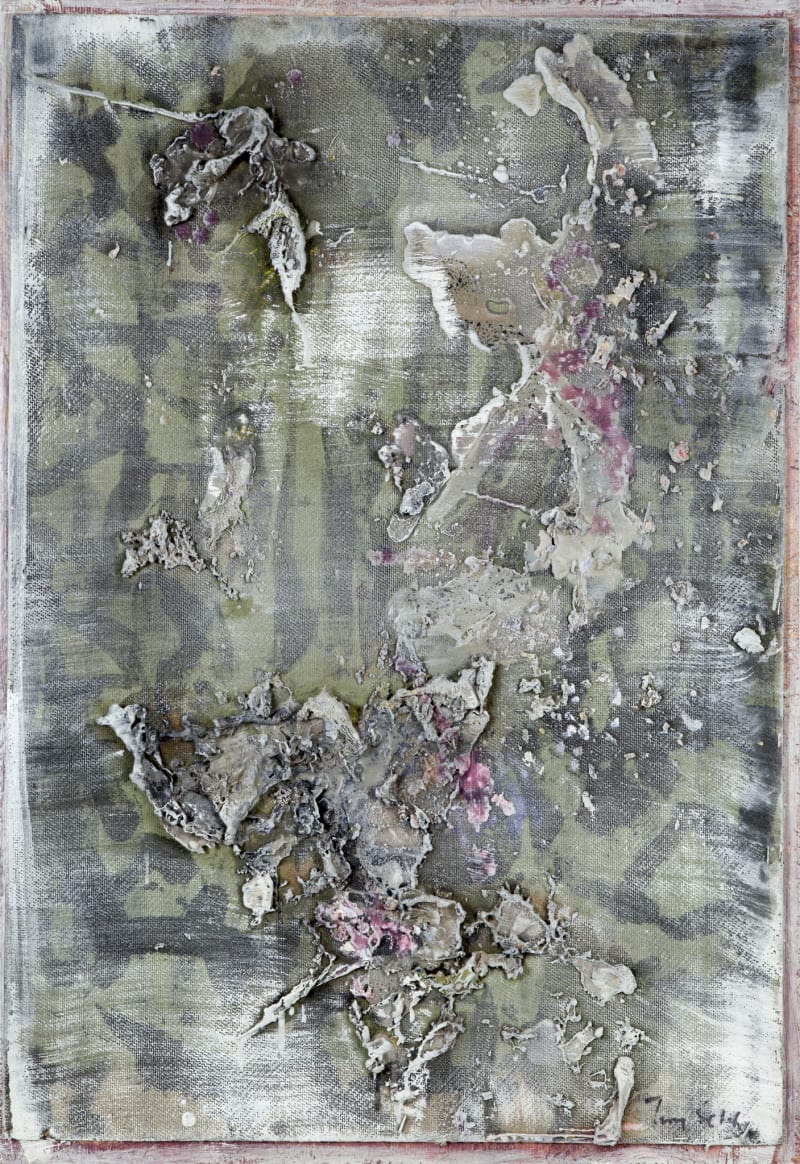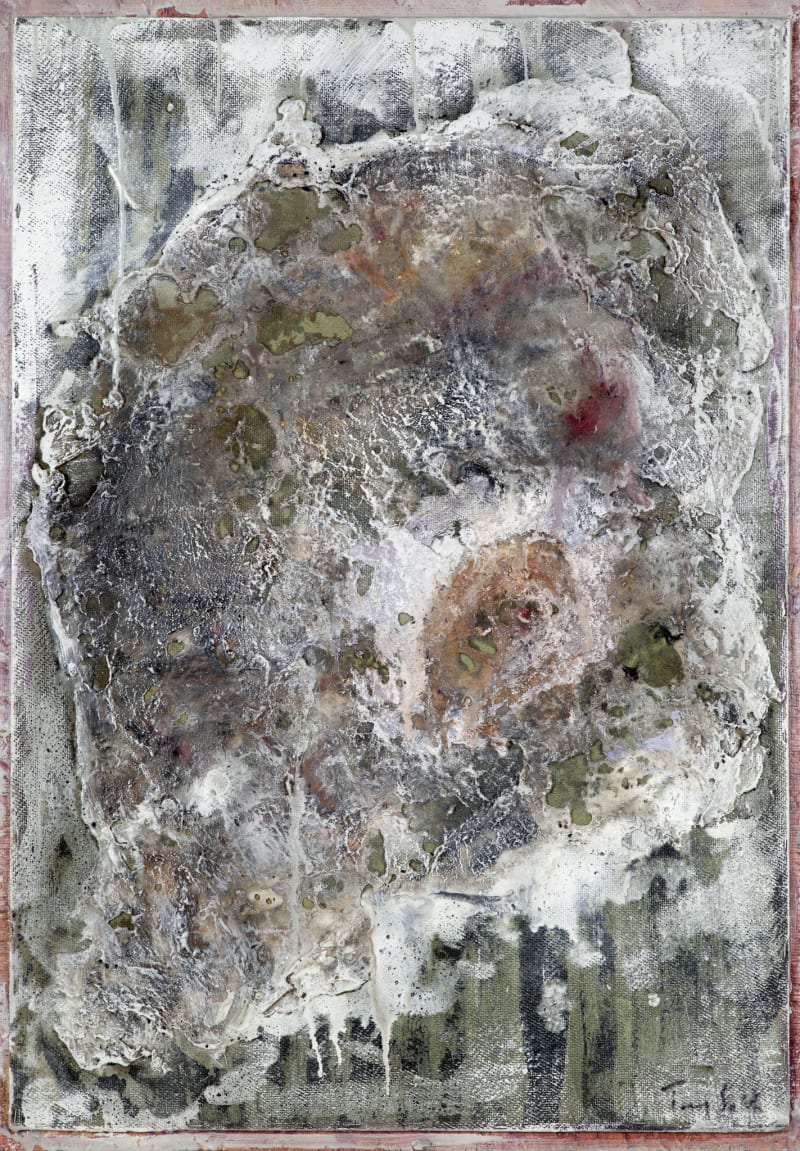
Terry Setch
Reduced to Rubble
Overview
Flowers Gallery is pleased to present an exhibition of recent paintings by Royal Academician Terry Setch.
Over the course of his six-decade career, Setch has become known for his radical approaches to painting, in which he has synthesized the actions of the body with the experience of the natural environment. Characterized by the fusion of natural and synthetic elements, Setch’s paintings have incorporated industrially produced materials and environmental detritus since the 1970s, including resins, microcrystalline wax, polymers, and found plastic objects.
The present exhibition brings together new works on the theme of the beach landscape, a subject that has been a continuous presence in Setch’s work since 1969, when he first moved to the Penarth coast in South Wales.
As well as becoming a second studio for the production of his paintings, the beachscape provided Setch with important metaphors for wider contemporary political and social concerns - particularly the devastating impacts of pollution. Martin Holman has described the beach in Setch’s work as being “the Nevil Shute-like emblem of civilisation’s final refuge from nuclear or ecological catastrophe.” 1
Setch describes his initial connection to the beach as theatrical, referring to it as a ‘playground’ in which he could develop ideas. He initially devised ritualistic performances to imaginatively explore the possibilities of the environment – systematically setting up totem-like structures from rocks and beach detritus and returning to discover where the high tides had deposited the objects in new arrangements along the shore.
For many years, Setch produced his paintings directly on the beach, onto purpose-made tarpaulin sheets, thereby bringing the image closer to the experience of nature. Pursuing his active interest in unity and disunity, order and disruption, Setch allowed the elemental forces of the beach such as the wind and deteriorating effects of seawater to transform his materials, unifying even the most disparate of objects from wrecked cars to the surrounding rocks. As he has said, “The beach has the power to shape everything it touches into its own image.”
Setch’s painting process can be seen as a metaphor for actions performed by the beach itself, echoing the constant pounding erosion of the tide through his reconfiguration and excavation of the painted surface with paint strippers and hot air guns. The encaustic painting method that he employs, produced by applying hot wax mixed with oil pigment and resin, also harbours objects found on the beach, which are buried beneath the surface. The physical manipulation of the wax substance, itself highly evocative of the body, was one of the ways in which Setch established his own physical presence as another element in the scene, (an artistic strategy closely aligned with land art and action painting).
One of several monumental wall hangings in the exhibition, The Tide Licks the Shore invokes the intimate rolling encounter of the sea and shingle, with a distended biomorphic form protruding from its centre. The organic, sinewy appearance of the three-dimensional shape is the result of partially melting polypropylene fabric into a substance which is then intuitively thrown onto the support while still hot.
In Beach Stretcher the tarpaulin canvas acts as a painted backdrop for an embryonic hanging form anchored to the painting’s steel support. The three-dimensional figure/ground relationship echoes significant works produced by Setch in the 1960s involving packed leather pouches suspended before the paintings, which signaled the beginning of his concern with the spatial limits of painting. The elongated shape and human scale of the tarpaulin (around 8ft by 2ft) reflects Setch’s preoccupation with the image of a medical stretcher since the advent of the recent Ebola crisis.
Reduced to Rubble, which lends the show its title, incorporates metal rods extracted from broken down concrete sea defenses. Traces of their form are etched into the rugged, encrusted surface like rivulets left in the sand by the tide, or ancient fossils, contributing to Setch’s continually evolving language of marks, symbols and objects encased and preserved within the wax.
